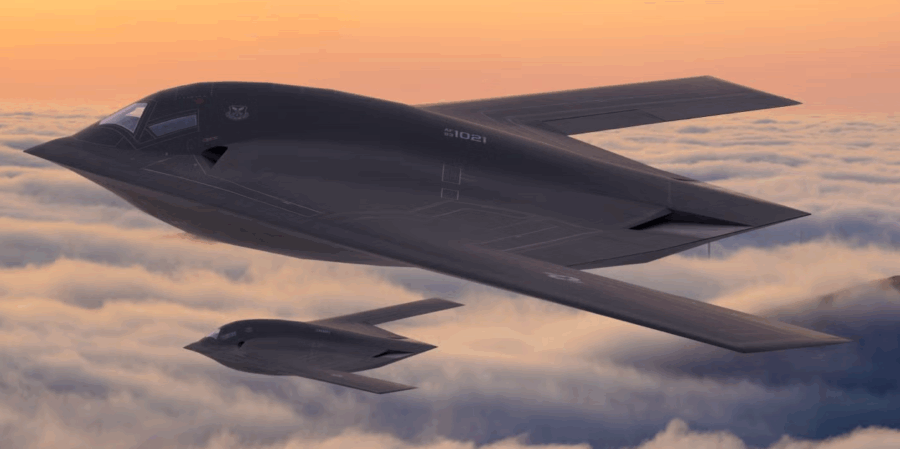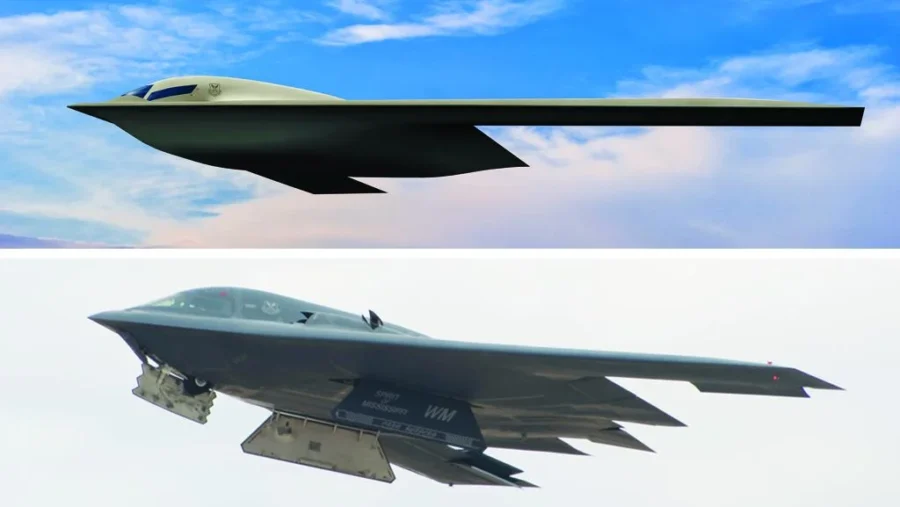Northrop Grumman Adds Second B-21 Raider to Accelerate Stealth Bomber Tests

Northrop Grumman has added a second B-21 Raider stealth bomber to the U.S. Air Force’s flight-test program, marking a pivotal milestone in the development of America’s next-generation long-range strike aircraft. The second test jet arrived at Edwards Air Force Base on September 11, 2025, nearly two years after the maiden flight of the first B-21 in November 2023.
With two aircraft now in active flight testing, the program moves into a more advanced phase of evaluation—including mission-systems integration, weapons testing, and sustainment planning. This expansion is expected to significantly accelerate the timeline toward Initial Operational Capability (IOC), still targeted for the mid-2020s.
“With the arrival of the second B-21 Raider, our flight-test campaign gains substantial momentum,” said Air Force Secretary Troy Meink. “We can now expedite critical evaluations of mission systems and weapons capabilities, directly supporting the strategic deterrence and combat effectiveness envisioned for this aircraft.”

Strategic Importance of the B-21 Raider
Developed under the oversight of the Air Force Rapid Capabilities Office, the B-21 Raider is designed to replace aging bombers such as the B-1B Lancer and B-2 Spirit and serve as the cornerstone of the U.S. strategic bomber fleet. Regarded as the world’s first sixth-generation aircraft, it is engineered for deep-penetration missions in highly contested environments and is capable of delivering both conventional and nuclear payloads.
As the backbone of future U.S. air power, the B-21 features advanced low-observable (stealth) technology, an open-systems architecture for rapid upgrades, and enhanced maintainability to keep it adaptable for decades to come. It is intended for operation in high-threat environments as part of a broader “family of systems” that integrates other advanced capabilities such as intelligence, surveillance, and reconnaissance.
Ground Testing and Production Momentum
In addition to the two flying test aircraft, Northrop Grumman has assembled two more B-21 airframes for static and fatigue testing, ensuring the bomber’s structural integrity and long-term durability. These non-flying units are critical for validating airframe performance under extreme conditions and form part of the broader low-rate initial production strategy already underway. Northrop executives have said lessons learned from the test fleet feed directly into production processes, helping keep costs down and schedules on track.
Infrastructure and Operational Readiness
The Air Force is concurrently investing in infrastructure at the B-21’s future operating bases—Ellsworth AFB in South Dakota, Dyess AFB in Texas, and Whiteman AFB in Missouri. Major construction projects are slated for fiscal year 2026 to prepare hangars, logistics systems, training facilities, and maintenance crews for the bomber’s eventual deployment.
“By having more assets in the test environment, we bring this capability to our warfighters faster,” said Air Force Chief of Staff Gen. David Allvin. “This demonstrates the urgency with which we’re tackling modernization.”
Accelerating the Path to Service
The arrival of the second B-21 Raider significantly increases the pace and scope of testing, allowing the Air Force to validate mission systems, weapons integration, and sustainment concepts in parallel. This accelerated approach is aimed at delivering a stealth bomber capable of penetrating next-generation air defenses and maintaining the United States’ long-range strike advantage well into the 21st century.
By pairing rigorous ground testing with an expanding flight-test fleet, Northrop Grumman and the Air Force hope to de-risk the program and ensure a smoother transition from development to operational service—an essential step as legacy bombers age out of the force and global threats evolve.
Related News: https://airguide.info/?s=B-21, https://airguide.info/category/air-travel-business/defense-military/
Sources: AirGuide Business airguide.info, bing.com, aerotime.aero, aviationweek.com
